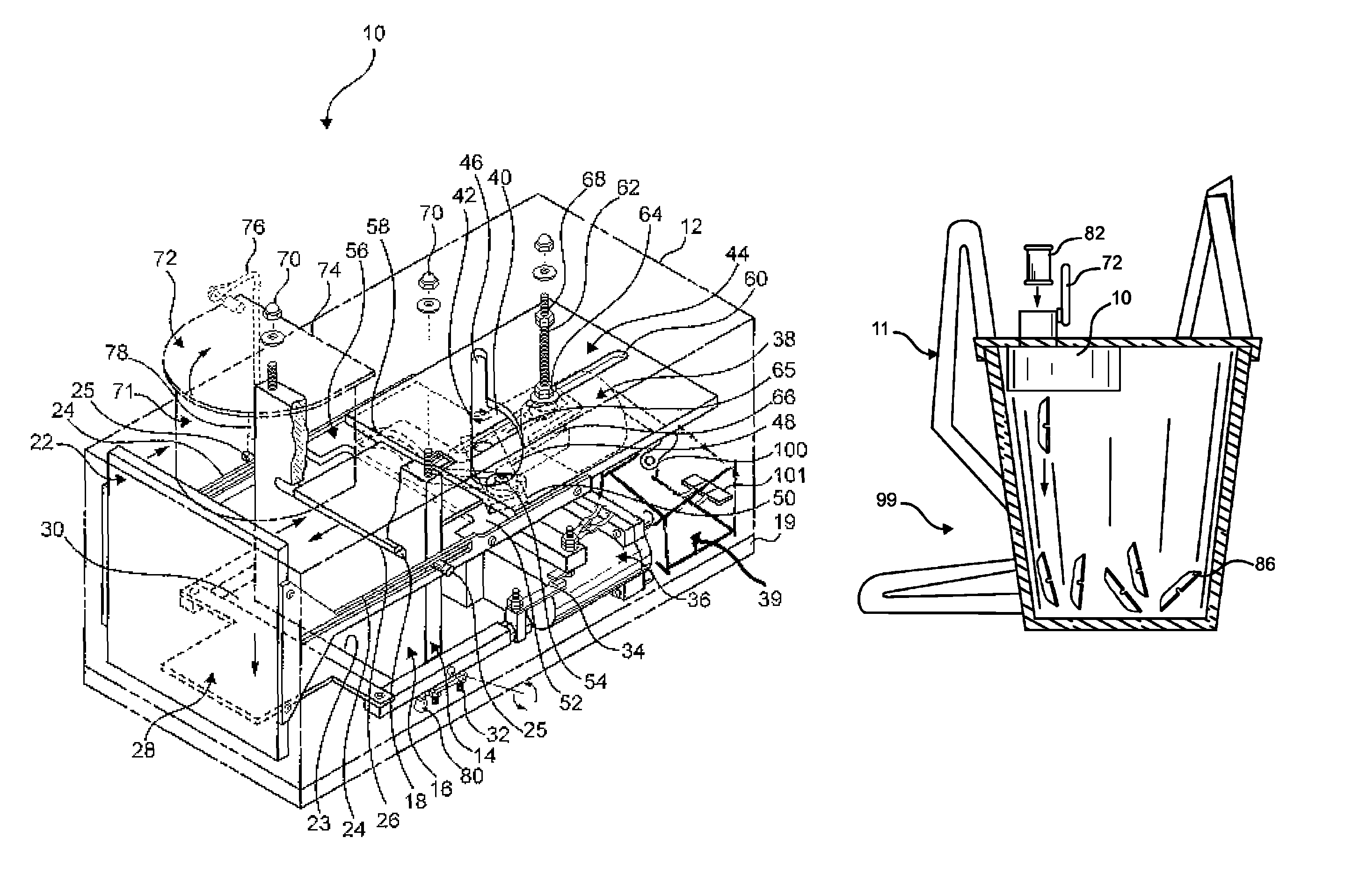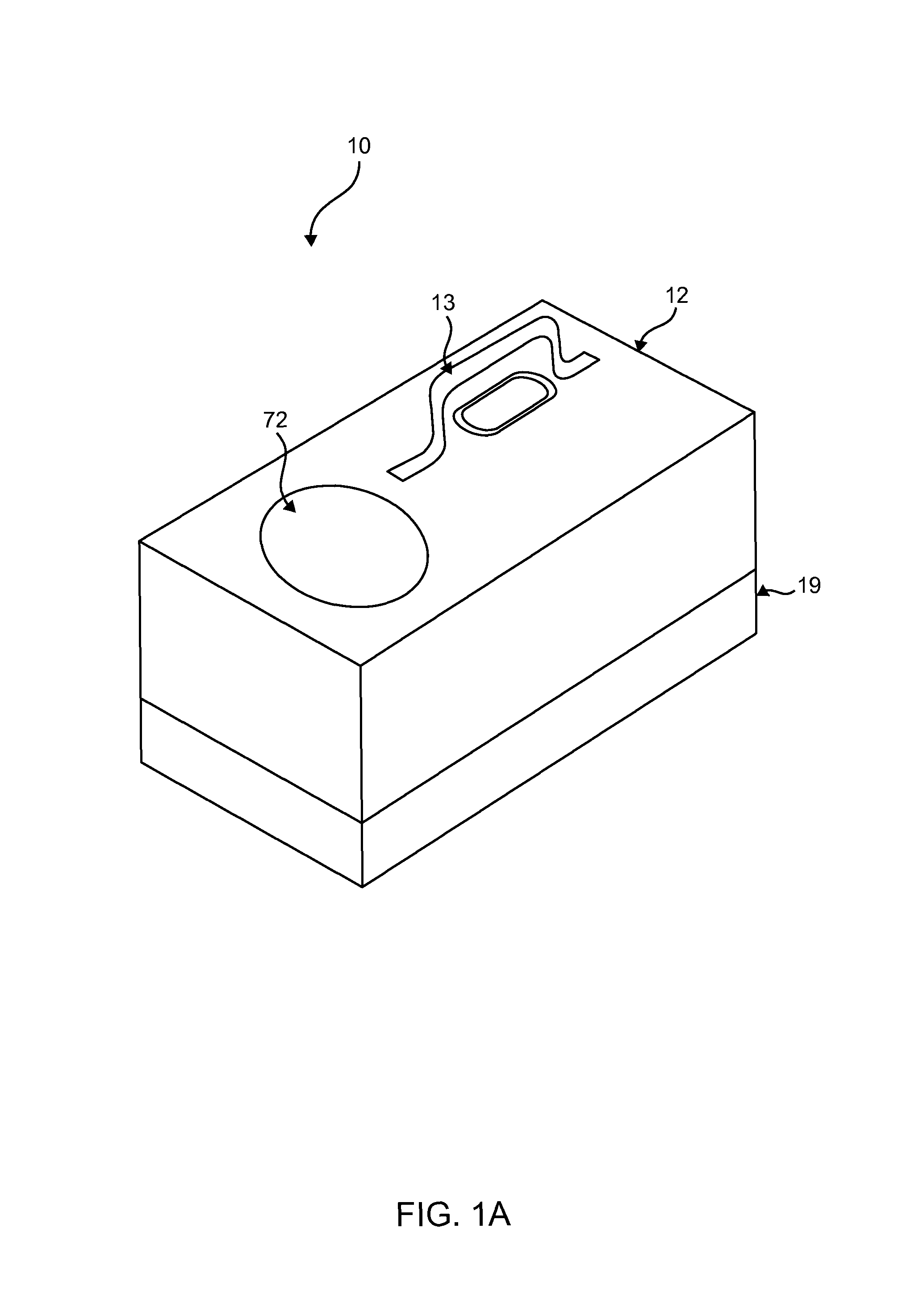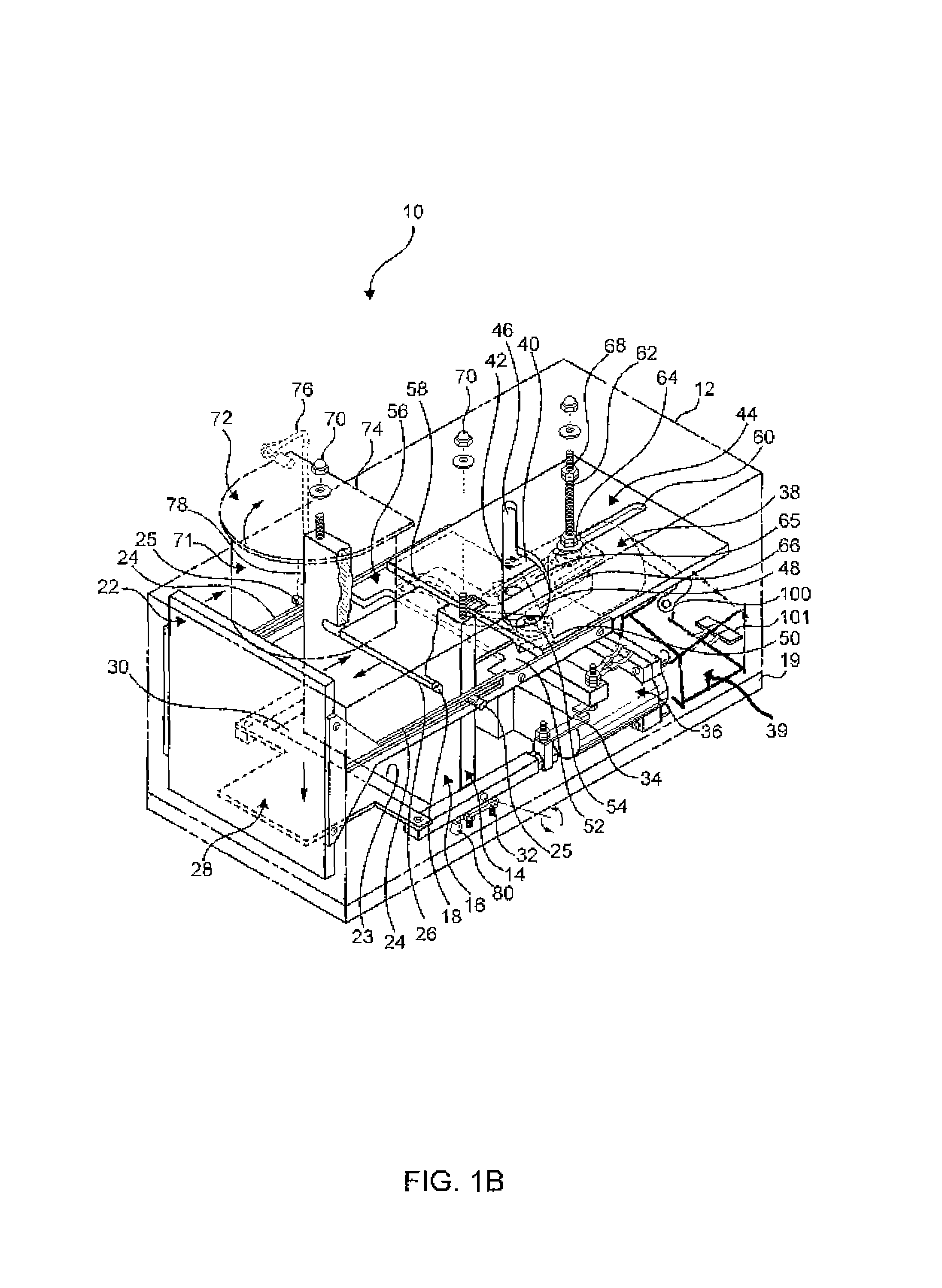Portable electric can crusher
a can crusher and electric technology, applied in the direction of presses, manufacturing tools, presses, etc., can solve the problems of increasing the cost of manufacture, not yet being able to capitalize on new technologies, and especially bad “trash problems”, etc., to achieve faster and thus more productive crushing of cans, longer lasting, and more powerful
- Summary
- Abstract
- Description
- Claims
- Application Information
AI Technical Summary
Benefits of technology
Problems solved by technology
Method used
Image
Examples
Embodiment Construction
[0022]The present invention relates to a portable electric can crusher 10 (FIGS. 1A-B and FIG. 9) that can be used anywhere. FIG. 1A is a perspective view of an exemplary embodiment of the portable electric can crusher according to the invention, with a housing 12, a handle 13, a support enclosure 19 having a height from its bottom to its top of at least the same height as a crushed can, and a lid or removable cap 72, depending on the embodiment. A partially cutaway perspective view of one embodiment of the invention is presented in FIG. 1B which shows the can crusher 10 along with housing 12. The basic structural support of the can crusher 10 is the vertical wall support structure 14. The vertical wall 14 is fixed and stationary by virtue of its direct attachment to the gear box assembly or “gear box”36 and is used as an anvil type crushing wall. Its front wall 16 has a rectangular slot 18 therethrough which accommodates entry and withdrawal of the crushing plate 26 into and from t...
PUM
 Login to View More
Login to View More Abstract
Description
Claims
Application Information
 Login to View More
Login to View More - R&D
- Intellectual Property
- Life Sciences
- Materials
- Tech Scout
- Unparalleled Data Quality
- Higher Quality Content
- 60% Fewer Hallucinations
Browse by: Latest US Patents, China's latest patents, Technical Efficacy Thesaurus, Application Domain, Technology Topic, Popular Technical Reports.
© 2025 PatSnap. All rights reserved.Legal|Privacy policy|Modern Slavery Act Transparency Statement|Sitemap|About US| Contact US: help@patsnap.com



